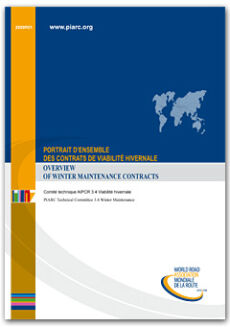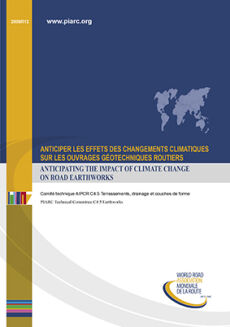Technical Reports Road assets management
This page lists technical reports of PIARC in the field of road assets management. These publications are classified chronologically.
-
Road tunnels: operational strategies for emergency ventilation

During normal operation, ventilation, whether natural or mechanical, is required to provide a clean air environment and to prevent the accumulation of pollutants. During emergency operation, ventilation is needed to influence the flow of smoke. Smoke control plays a key role to increase the chances of survival for tunnel users experiencing a fire, in particular during the self-rescue phase. After describing ventilation ant its essential role, the report provides a list of countries that have introduced [...]
-
Tools for road tunnel safety management

This report is dedicated to the basic tools needed for management and decision support on road tunnel safety issues. It defines the general demands on tunnel safety documentation, referring to each of the three different stages of a tunnel project: design-construction, commissioning, operation. An overview table and detailed checklists are given. It deals with collection of incidents and their analysis. The report defines the significance of incidents to be recorded and presents the basic data [...]
-
Overview of winter maintenance contracts

Road transportation has increased considerably in the past few decades and winter maintenance has become a public service activity of vital importance to the economy. Many production activities are organized with reduced inventories and just-in-time policies have developed considerably, resulting in a substantial growth of road transportation. In a society in motion, it is necessary to make passenger and freight traffic transportation when weather conditions are deteriorating and are likely to result [...]
-
Asset management practice

Road Asset Management is a more developed approach to the task of steadily improving the satisfaction of road stakeholders. It enables road administrations to better optimise outcomes. It also incorporates the concept of business excellence in relation to both results and enablers. The objective of this report is to help road administrations with implementation of the Asset Management approach for management of road networks. The report contains some arguments and practical recommendations for [...]
-
Anticipating the impact of climate change on road earthworks

Climate change and its consequences are one of the main preoccupations of the beginning of the 21 st century. The first part of the report presents, as an example, regional scenarios of the climate evolution for Quebec and Switzerland. The second part focuses on water: lack or excess of water and its state. It deals with the cases of embankments, natural slopes, rise of sea level, modifications of the permafrost, and the increase of the wind force. Various examples are presented in the third part. [...]